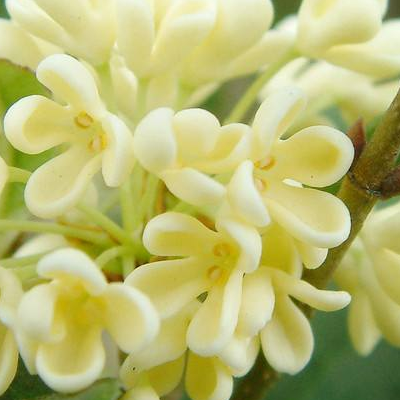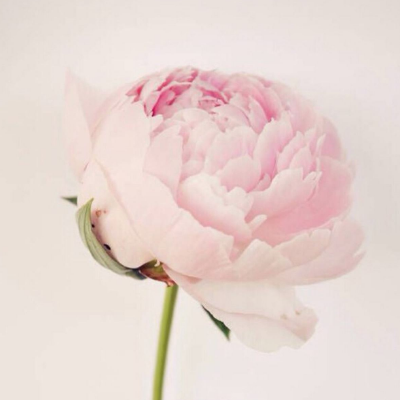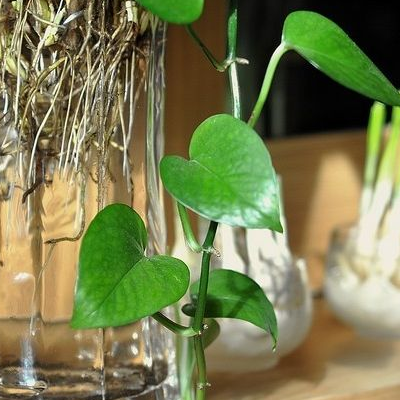When will the grafting method of Osmanthus fragrans be good?
Sweet-scented osmanthus, which is liked by many people, if this sweet-scented osmanthus blossoms, it is really fragrant, what is the grafting method of sweet-scented osmanthus? When will sweet-scented osmanthus be grafted:

Grafting method of Osmanthus fragrans
Grafting method: abdominal grafting and leaning grafting are generally used.
1. Ventral connection: this kind of ventral connection is to trim the rootstock before joining, cut off all the rootstocks at 6mur7cm from the soil surface, and cut obliquely near the rhizome. The medulla must not be injured. The scion uses 2 Mel 3 to produce branches (without leaves), about 10 cm long. It is more appropriate to have 2 Mel 3 sections. Then the ear interface is cut into an unequal wedge and inserted into the cutting of the rootstock to make it close. Tie it with plastic or hemp skin and choke the soil to the top of the scion.
2. Leaning on: the rootstock is first fed in a basin. Generally speaking, the branches of two-year-old sweet-scented osmanthus seedlings which are similar in thickness to the rootstock are selected during the Meiyu period from June to July, and cut off in front of "White Dew" after survival. That is, the new plant, which can blossom in the same year.
3. After the grafting survived, when the new graft is slightly as long as 10-15 cm. At this time, all the remaining branches and tillers of the rootstock can be cut off. As the anvil is easy to sprout adventitious buds, it should be peeled off at any time. Drought resistance, topdressing and weeding were carried out from June to August. Potted seedlings should be coring when the new shoots reach about 15%, which can promote the growth of lateral branches and form a shrub.
When will Osmanthus fragrans be grafted?
Grafting sweet-scented osmanthus in early spring is better, and it will be able to determine whether it will survive or not, which is conducive to management. Osmanthus fragrans can also be grafted in autumn, and the survival rate of master grafting is relatively high.
This is the end of the introduction of the method of grafting of sweet-scented osmanthus. We should pay attention to the method of grafting.
Sweet-scented osmanthus grafting method | how to graft sweet-scented osmanthus? What are the grafting methods of Osmanthus fragrans? This paper mainly introduces how sweet-scented osmanthus is grafted. There are many methods of sweet-scented osmanthus grafting, among which the grafting method is commonly used in potted sweet-scented osmanthus in China. Its advantages are: long time for grafting, easy to survive, fast forming and early flowering. The key points of osmanthus fragrance joining technology are introduced as follows:
I. grafting method
⑴ moved the scion closer to the rootstock. The branches of sweet-scented osmanthus selected as scions can be close to the branches of rootstocks by means of support, cushion, frame, hanging, binding and so on. Then determine the suitable grafting position of rootstock and scion, and fix the position.
⑵ cutting interface bevel. The interface bevel was cut at the grafting site between the rootstock and the scion. The slope is oval in shape, the length is 3-5cm, and the depth of the slope is generally no more than half of the thickness of the branch.
⑶ cutting anvil. After the grafting and binding is completed, cut off the branches of the rootstock 1 cm above the interface.
⑷ to remove cuteness. After grafting, if the branches germinate below the interface of the rootstock, it should be erased in time. 31-35 days after grafting, the scion was cut off from the interface and separated from the mother.
The survival rate was checked by ⑸. 3-5 days after cutting the scion, the scion branches and leaves grow normally is to survive; if the leaves appear wilt II, cultivate rootstocks grafting sweet-scented osmanthus rootstock species are privet, tassel tree and so on. The rootstocks for grafting should be robust and free from diseases and insect pests, 2-3-year-old seedlings with a diameter of more than 1 cm or 2-3-year-old branches on perennial trees.
Third, the selection of scion sweet-scented osmanthus has Jin Gui, Yin Gui, Dan Gui, Siji Gui and other varieties. First of all, sweet-scented osmanthus varieties can be selected according to their preferences and resource conditions, and then 2-3-year-old branches with strong growth, full development, no disease and insect harm and moderate size can be selected as scions.
Grafting method of Osmanthus fragrans, the key points of potted Osmanthus fragrans Conservation
When decorating in the home, many people will choose to put several pots of sweet-scented osmanthus with beautiful plant shape and pleasant fragrance. So, how to maintain potted sweet-scented osmanthus? How can sweet-scented osmanthus be grafted? Next, I will introduce the key points of potted sweet-scented osmanthus conservation, as well as the grafting methods of sweet-scented osmanthus.
Key points for conservation of potted sweet-scented osmanthus
1. Watering: the sweet-scented osmanthus pot soil should be watered thoroughly, but it is necessary to spray water on the leaves once a day to spray all the branches and leaves evenly, so as to start dripping water, so as to keep the leaves moist and wash the dust adsorbed on the leaves. After the Qingming Festival, the sweet-scented osmanthus was moved to the open air and watered once. It must be watered in the morning and evening in summer and around noon in winter, so that the water temperature is close to the soil temperature, so as to avoid sudden cold and heat, and pay attention to no stagnant water. Keep the basin soil moist in winter.
2. Fertilization: sweet-scented osmanthus is mainly ornamental, and sufficient fertilizer should be provided. During shoot shooting, nitrogen fertilizer could be applied twice to promote the growth of branches and leaves, while phosphorus fertilizer was mainly applied before flower bud differentiation and flowering. After the sweet-scented osmanthus is moved to the open air in spring, it begins to water the thin bean cake. Sesame sauce. Fish fishy water, etc., once every semimonthly, irrigated once a week from the end of May to before flowering, the concentration of fertilizer and water increased gradually, and 0.5% potassium dihydrogen phosphate solution was applied every other half month from July to August. Apply a light fertilizer after flowering so as not to cause autumn branches. In winter, it is necessary to apply more organic fertilizer and phosphorus and potassium fertilizer. Generally, the roots should be treated with retting rotten and deodorized cake fertilizer 25mol / 30g, potassium dihydrogen phosphate 10m / 15g, 2-3 jin of water, and 1000 times nucleotide spray on the leaf every 15 days. The mixture of 600 times high-efficiency biological phosphorus and potassium fertilizer can spray all the branches and leaves evenly, and it is appropriate to start dripping water. Before applying fertilizer, the basin soil should be a little drier, and it is appropriate to loosen the soil so that the fertilizer can be absorbed. Water should be watered once on the second day of fertilization. If compost or stable compost is used, it must be completely rotten before it can be used (marked by blackening of fat). The concentration of chemical fertilizer calcium superphosphate should not exceed 2%, and the concentration of urea should be 0.5-1.0%.
3. Pour the pot: the potted sweet-scented osmanthus should change the soil once every 2-3 years. Cut off part of the old and withered roots and remove part of the old soil with bamboo sticks. Before putting on the basin, put a layer of river sand or vermiculite on the bottom of the basin to facilitate ventilation and drainage, and place rotten cake fertilizer as the base fertilizer, the fill must be compacted, which can promote sweet-scented osmanthus blossom and luxuriant leaves. The soil ratio of potted hanging flowers is not very strict, and it can be made of garden soil, barnyard manure and river sand. If the acidity is too high, you can add some lime powder or plant ash; if the alkalinity is too heavy, you can add some aluminum sulfate or ferrous sulfate. In spring, after potted sweet-scented osmanthus is planted, it should be watered thoroughly, and then moved to the shade for about 10 days to make it "serve the basin". During the period of taking the pot, do not apply fertilizer. Water and fertilize only after the growth is restored and new leaves grow. The texture of flowerpot is better with purple sand pottery or glazed pottery, and the color is better with purple or ochre, which can be in sharp contrast with the color of flowers and leaves to increase its ornamental effect.
4. Pruning and shaping: sweet-scented osmanthus is best made into curved dry type, oblique dry type or floating style. The tree is oblique, with luxuriant branches and leaves, simple and natural, the most enjoyable. When it blossoms, the fragrance is overflowing and refreshing. The plastic surgery of sweet-scented osmanthus generally adopts the method of climbing and pruning, and the trunk can be tied into a curved stem or oblique dry type. The shaping and pruning of sweet-scented osmanthus should be carried out after autumn. for the plants with high growth and empty lower branches and poor tree shape, the whole top branches can be cut off at 2pm 3 or 3pm 4. for "top-heavy" plants, the upper too dense branches should be cut off, leaving only the lower small branches, and the plants with too dense branches should be thinned. After flowering, a pruning should be carried out to cut off the overgrown branches, withered branches, disease and insect branches, dense and thin branches.
5. Overwintering: the room temperature should be kept at 5 ℃, and the relative humidity should be kept at 50-80%. Winter cold indoor light should be good, especially before the early spring buds begin to sprout, more sunny is required. In the spring of the following year, potted sweet-scented osmanthus was arranged to go out after Grain Rain in North China (before and after the sting in the Huang-Huai Valley). After coming out of the room, first concentrate on the outdoor leeward and sunny place, and then spread it into a row, so that it gradually adapt to the external environment.
6. pest control: the common diseases of sweet-scented osmanthus include leaf spot, coal pollution, algal spot, root rot, iron deficiency and so on. Leaf spot, coal pollution and algal spot can be sprayed with 0.5 Bordeaux solution or 5% carbendazim 500-1000-fold solution for prevention and control; for the prevention and control of root rot, attention should be paid to keeping the soil loose and permeable without stagnant water; if root rot is caused by fungi, 200-300 times solution of benzoammonium can be used to irrigate the root. The common pests of sweet-scented osmanthus are leaf wasp, whitefly, mite, white scale, yellow moth and so on. Leaf wasps, whitefly and mites can be sprayed with 40% dimethoate 1500-3000 times solution. In addition to manual brushing, the scale can be sprayed with 40% omethoate 1000 times or 40% fenitrothion 500 times solution in the first and second generation nymphs.
Grafting method of Osmanthus fragrans
Ligustrum lucidum, lobular privet, lobular ash and other 1-2-year-old seedlings are used as rootstocks. Among them, the survival rate of sweet-scented osmanthus grafted with privet is high, and the initial growth is fast, but the wound is not healed well, and it is easy to break off in case of strong wind or external force collision.
1. Leaning connection method:
Grafting propagation of sweet-scented osmanthus is generally used by grafting method, because privet has strong adaptability, cold and waterlogging resistance, so it mostly uses lobular privet as rootstock. When the grafting is from April to June, the scion can choose a robust twig with a diameter of about 0.7-0.8 cm, and the thickness of the rootstock is preferably equal to that of the scion. When leaning against the grafting, put the flowerpot of the rootstock close to one side of the parent plant, so that the grafting can be close and close, then on the branches of the mother plant of equal height, select the straight, smooth and jointless parts, each cut out an oval section of about 3-4 cm in length, cut out the cambium to the depth of the xylem, and then immediately put the two incisions together to align the cambium, and then wrap them tightly with hemp strips. Wrap it with plastic sheeting to keep the humidity inside. After the completion of the grafting operation, the wound healed after about 2 months, and the wound formed a tumor-like mass and grew tender roots. When the new root grows to 2-3 cm long, it can be cut off from the mother plant. Newly planted plants only need to be placed in a cool place to prevent the sun, maintain humidity and water properly. If it is managed properly, it can blossom in the same year.
2. In addition to relying on the joining method, there are also commonly used splitting and abdominal joining methods in production:
The two grafting methods were carried out before and after Ching Ming Festival. It is appropriate to select 1-2-year-old sturdy, disease-free branches on adult trees, remove leaves and retain petioles. Split grafting method, the rootstock should be cut 4-6 cm from the ground before spring seedling sprouting before grafting. The thickness of the scion should match the thickness of the rootstock, the cutting surface of the scion should be smooth, and the key to the success of split grafting is that the cambium of the rootstock and the scion should be aligned and tightly bound. In the abdominal grafting method, the buds were directly embedded in the rootstock without breaking the rootstock, and then the rootstock was cut off after successful grafting. No matter which method is adopted for grafting, it should be grafted as soon as possible. If you take ears from other places, be sure to keep them fresh. It is better to choose sunny and windless weather for grafting. After grafting, attention should be paid to checking the survival rate, doing a good job in mending, wiping buds, cutting rootstocks, unbinding, water and fertilizer management and prevention and control of diseases and insect pests.
3. Soil piling and grafting:
The soil grafting of sweet-scented osmanthus is carried out by cutting method. When grafting, the scion is soaked for a day and night to make it absorb enough water. Cut the rootstock at 3-5cm from the ground, cut 2-3cm from one side of the cross section, cut the lower end of the scion with 2.5-3.0cm, cut off some skin on the reverse side, and cut flat on both sides, then insert the rootstock to make the cortex close to each other, bind the skin with hemp skin, apply wet mud at the interface, and finally fill the lower part of the scion with moist sand so that the upper end shows 2-3cm. Be careful not to loosen the scion. After the grafting survived by this method, the flax skin rotted by itself, and there was no need to dissolve the rootstock.
4. Rootless grafting technique:
The normal order of cutting grafting is reversed, that is, first the sweet-scented osmanthus buds are grafted on the lobular privet cuttings, and then the grafted cuttings are directly cut in a flat border to take root, and the cuttings and scions survive together. In this way, it avoids the problem of low labor efficiency of squatting to the field after the cuttings survive. The new shoots germinated from Ligustrum lucidum need to be cut off in time to ensure the normal growth of sweet-scented osmanthus.
The above is for you to introduce the key points of potted sweet-scented osmanthus conservation, as well as sweet-scented osmanthus grafting methods, are we clear? Please pay attention to more household knowledge.
- Prev

The difference between Paeonia lactiflora and Peony
Peony flower, this is a lot of friends have seen, this peony flower is so attractive, how to plant this peony flower? What is the difference between peony flower and peony: how to plant peony flower: 1. Peony planting time: peony likes sunshine and is resistant to cold, and should be cool and afraid of heat when it comes to temperature.
- Next

Can hydroponic green pineapple grow fish? how often do you change the water?
Green pineapple, this is a lot of friends are super like, this green pineapple culture method is also super many people like, green pineapple culture method can be hydroponic, this hydroponic green pineapple can cultivate fish? How often do hydroponic green pineapple change water: can hydroponic green pineapple raise fish: the answer is yes
Related
- Fuxing push coffee new agricultural production and marketing class: lack of small-scale processing plants
- Jujube rice field leisure farm deep ploughing Yilan for five years to create a space for organic food and play
- Nongyu Farm-A trial of organic papaya for brave women with advanced technology
- Four points for attention in the prevention and control of diseases and insect pests of edible fungi
- How to add nutrient solution to Edible Fungi
- Is there any good way to control edible fungus mites?
- Open Inoculation Technology of Edible Fungi
- Is there any clever way to use fertilizer for edible fungus in winter?
- What agents are used to kill the pathogens of edible fungi in the mushroom shed?
- Rapid drying of Edible Fungi

